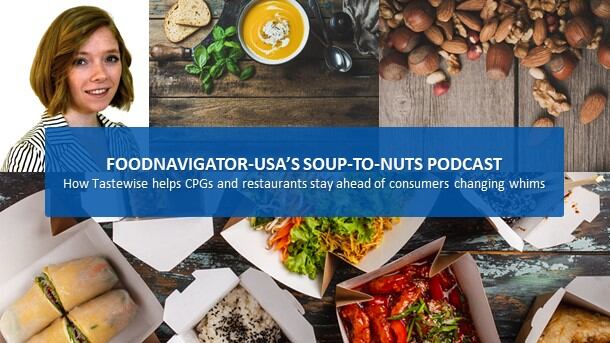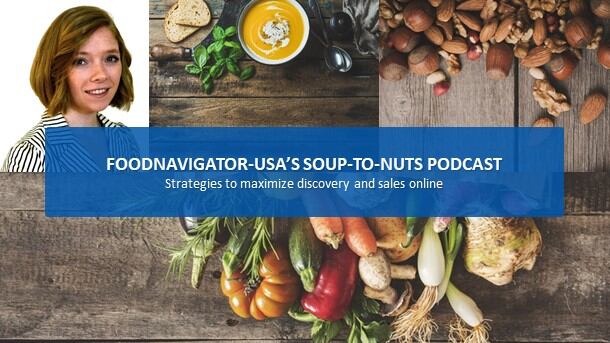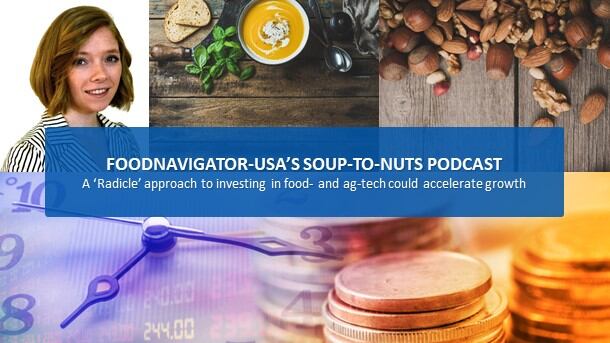Historically, most Americans spent the bulk of their food budget on ingredients or beverages purchased at a grocery store – making it relatively easy for retailers and brands to track what shoppers were buying and spot changes in purchasing patterns that might signal emerging preferences.
However, according to Alon Chen who is the CEO of the artificial intelligence-based food trend and analysis company Tastewise, this is no longer the case. Now, he points out, consumers increasingly are splitting their food budget across a variety of options outside the home in addition to grocery stores – making it more difficult to track shifting preferences.
He also notes that in addition to having more datasets to analyze, food and beverage brands have less time to spot trends because consumer preferences and dietary requirements are changing so quickly.
To help brands more efficiently comb through all this data and identify what consumers want, and more importantly will want in the future, Chen created Tastewise – a consumer intelligence platform that helps food brands understand in real time what consumers are eating and drinking based on free insights as well as more granular data analysis for purchase.
In this episode of FoodNavigator-USA’s Soup-To-Nuts Podcast, Chen explains how trendspotting in the food and beverage industry is evolving, what specific consumer preferences he sees emerging and how the motive behind those trends is influencing what will be popular in the future.
Building a better trendspotting tool
The idea for Tastewise came to Chen while he watched his mother try to navigate his immediate family’s ever-changing dietary preferences, and was solidified when he discovered that the once tried-and-true strategies that food and beverage brands used to stay ahead of this challenge were no longer working.
“My mom is regularly inviting us for Shabbat dinner and ahead of every Shabbat dinner she was asking all of us what are your new dietary requirements. And very surprisingly, every time she asked, there was someone else with a new thing,” Chen said.
“When we started talking with a lot of the big food brands, we realized the changing consumer demand and the new needs from people eating and drinking is actually constantly changing and there is an obvious need to get ahead of the curve and really finding new methodologies to understand the consumer,” he added.
He explained that the old strategies of walking around the mall and giving consumers a $100 voucher to ask a few questions about their preferences was too expensive, too slow and generally outdated. Similarly, he discovered that the data food brands were analyzing from grocery stores or their in-house sales only showed part of the answer as it didn’t include the meals that consumers were ordering at restaurants or having delivered.
“So, with Tastewise what we really do is look at consumers and find new ways to understand what people are eating and drinking and do it in real time,” he said.
Going beyond grocery
The main way that Tastewise identifies emerging and future food and beverage trends is by looking beyond just what is selling at grocery stores to also focus on what restaurants offer. But it doesn’t stop there – it also asks why consumers are ordering specific dishes or products as a way to identify underlying motivations that could influence other upcoming purchases.
Chen said that Tastewise draws on a database of 170,000 restaurant menus that are updated weekly to discover what chefs are preparing and what consumers are eating. Then Tastewise makes all this data available on its digital platform, which includes both a free and premium versions that offer different levels of granularity, including searching by category, ingredient, target audience and more.
“Our platform is based on more than 300 million data points. It is quite a powerful and robust way to upgrade your thinking process, your development process, your innovation pipeline and all the way to your marketing innovation,” he said.
Trend and opportunity spotting
So, what are the trends that Chen is watching at Tastewise? Like a lot of people, he says, he is watching the popularity of veganism and plant-based eating. But because Tastewise can zoom in at a very granular level, he says he can see not just who is and isn’t adopting the diet, but how it is influencing product development across categories.
For example, Chen says that veganism was growing quickly but is now leveling out around 5%. However, its influence continues to expand to new categories with creations of new alternatives to creams, cheeses, pasta and more. As such, he said, it is appealing to a larger group than just vegans.
Chen also is tracking through Tastewise the rise and evolution of the keto and low-carb diets to include more comfort foods.
“It is one thing to see that cauliflower crust pizza is rising or that people love cauliflower rice or broccoli rice as a low-carb or carb-free ingredient, but it is more important to understand, for instance, for the cauliflower crust pizza – what they really want by looking for this recipe is they are looking for comfort food” that still complies with their diet, he said. This reveals an opportunity for CPG manufacturers.
Another ‘actionable’ trend for CPG companies that Chen is tracking on Tastewise is the migration of ‘bowls’ from a style of eating previously restricted to restaurants and take-out joints to a way of cooking at home for which consumers are seeking a few pre-packaged shortcuts.
Additional services
Tastewise can help with more than just trendspotting. According to Chen the company is working closely with several food and beverage brands to develop new products, marketing campaigns and even identify entirely new concepts that address consumers’ daily struggle to get dinner on the table.
“We are working with the market very closely on everything from product innovation … to deciding how to launch the product,” he said.
Companies that want to know what other trends are emerging or how Tastewise might help take your brand or company in a new direction, check out https://tastewise.io/.




